Key takeaways
- Positive reinforcement fosters children’s self-esteem and strengthens emotional connections between parent and child.
- Specific and timely praise, along with varied rewards, enhances children’s understanding and motivation to repeat desired behaviors.
- Consistency and sincerity in complimenting efforts are crucial for effective positive reinforcement, especially during challenging times.
- Engaging activities, like praise jars and reward charts, can help track progress and maintain a positive atmosphere at home.
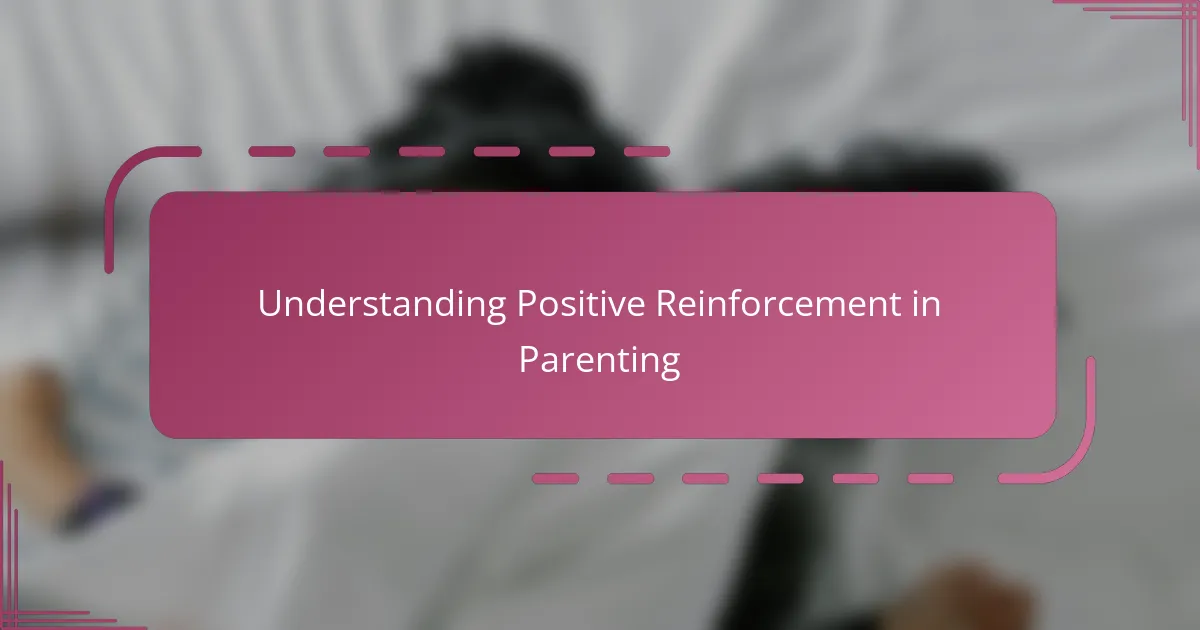
Understanding Positive Reinforcement in Parenting
Positive reinforcement, in my experience, is all about encouraging the behaviors you want to see more often by rewarding them. It’s amazing how a simple “Well done!” or a genuine smile can motivate a child to keep trying and improving. Have you noticed how a little praise can light up your child’s face and boost their confidence instantly?
When I first started using positive reinforcement, I realized it wasn’t just about giving treats or rewards. It’s about recognizing effort and progress, which makes children feel valued and understood. This emotional connection deepens trust and makes learning moments more meaningful for both of us.
I’ve often wondered why positive reinforcement works so well, and I think it’s because it taps into a child’s natural desire for approval and belonging. Instead of focusing on what went wrong, it shifts attention toward what went right, creating an uplifting cycle that encourages growth and happiness. Have you tried shifting your focus this way in your own parenting?
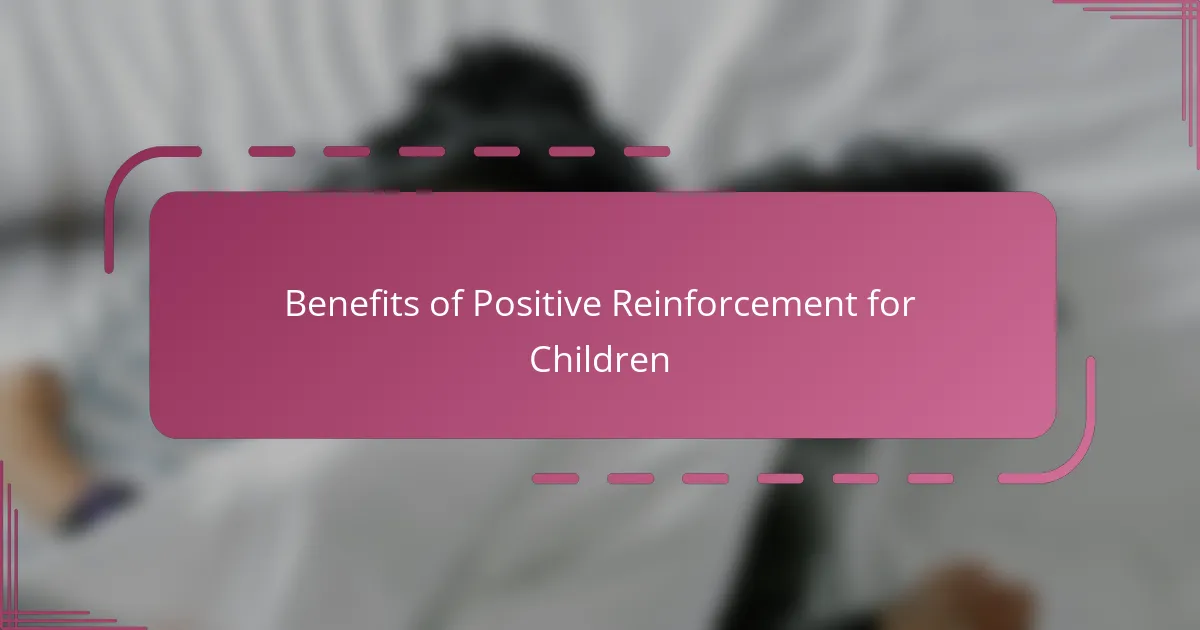
Benefits of Positive Reinforcement for Children
One of the biggest benefits I’ve seen with positive reinforcement is how it builds my child’s self-esteem. When I praise genuine effort, even small steps, it plants a seed of confidence that grows over time. Have you noticed how a kid who feels capable is more willing to tackle challenges head-on?
Another thing I cherish is the way positive reinforcement strengthens our bond. It makes my child feel safe and supported, like we’re a team working toward the same goal. This emotional safety net encourages my child to take risks and learn from mistakes without fear.
I’ve also found that positive reinforcement helps shape long-lasting good habits. Instead of relying on punishments, focusing on rewards creates a positive mindset that sticks with kids even when we’re not looking. Isn’t that the kind of parenting win we all hope for?
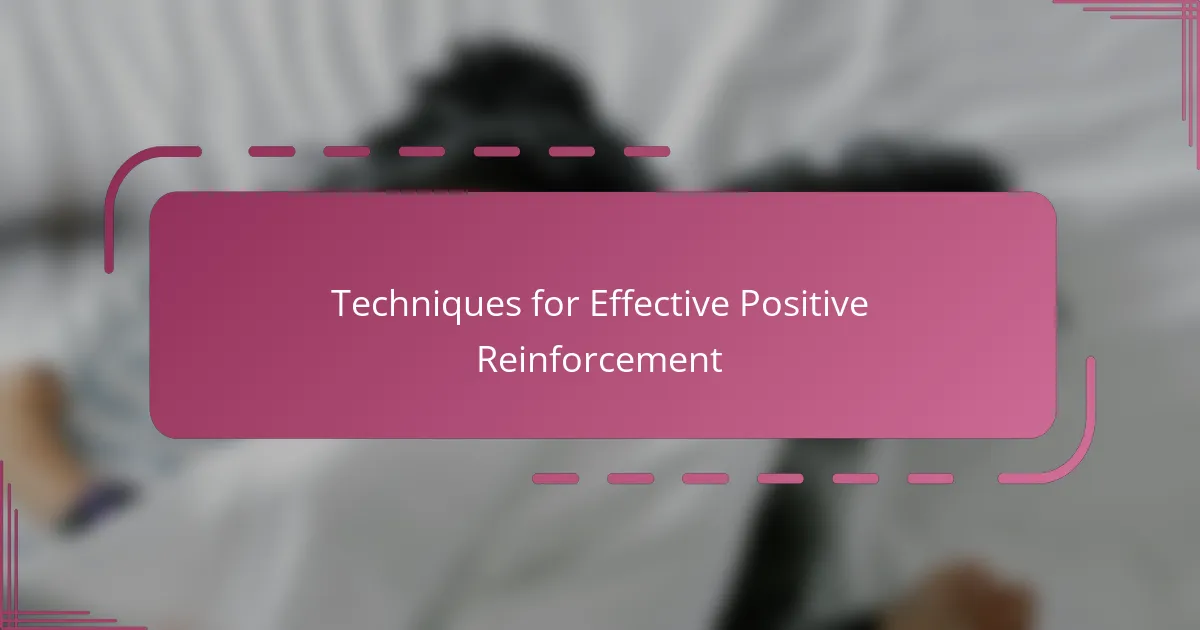
Techniques for Effective Positive Reinforcement
One technique I’ve found effective is being specific with my praise. Instead of a generic “Good job,” I say things like, “I really liked how patiently you waited your turn.” This kind of targeted feedback helps my child understand exactly what behavior I appreciate, making it more likely they’ll repeat it. Have you ever noticed how specific compliments seem to stick longer?
Timing also plays a big role in positive reinforcement. I’ve learned that delivering encouragement immediately after the desired behavior keeps the connection clear for my child. If I wait too long, the impact lessens, and the lesson gets blurry. Do you find that catching those moments right away makes a difference in your own parenting?
Finally, mixing up the types of rewards keeps things fresh and meaningful. Sometimes a hug works wonders; other times, a small privilege or extra playtime feels more rewarding. I try to tailor the reinforcement to what motivates my child most, and it’s amazing how responsive they become. What kinds of rewards have you noticed resonate best with your child?
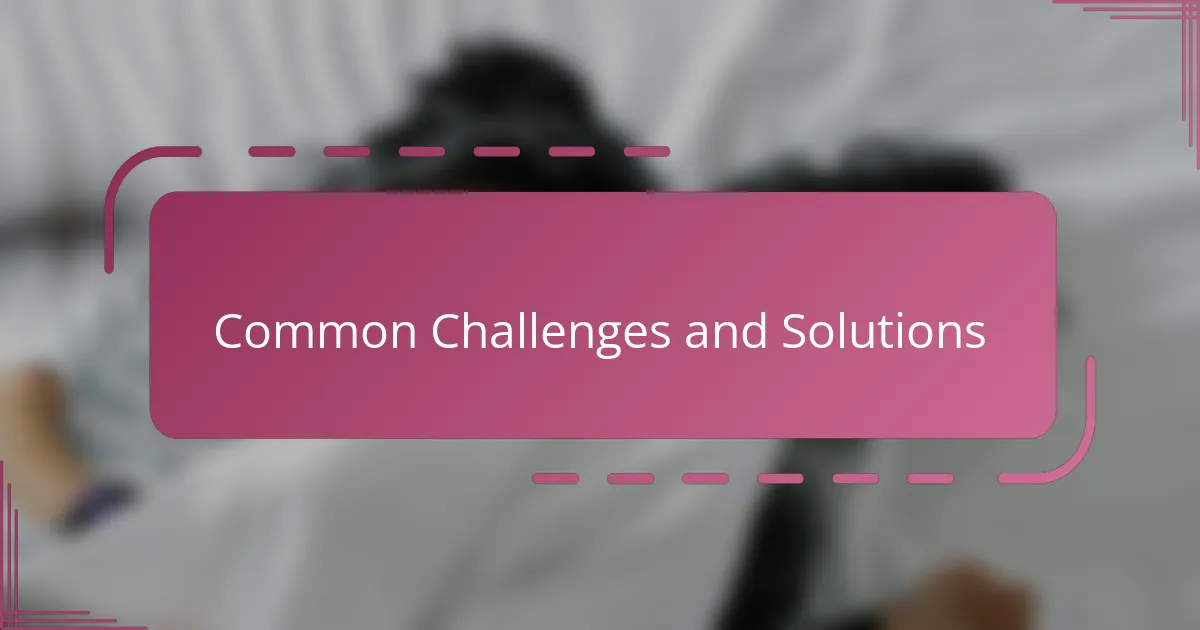
Common Challenges and Solutions
One common challenge I faced was staying consistent with positive reinforcement, especially on busy or stressful days. I realized that even short, sincere acknowledgments—like a quick “Thank you for helping”—kept the momentum going without adding extra pressure. Have you found small moments of praise easier to manage when time is tight?
Another hurdle was making sure my praise didn’t come off as insincere or repetitive. I learned to focus on genuine effort and unique behaviors, which made my child feel truly seen rather than just told “good job.” Have you ever noticed how kids respond better when they know you really mean it?
Sometimes, I struggled with balancing positive reinforcement against setting clear boundaries. It took me some trial and error to reward the good while still guiding my child firmly through limits. How do you maintain that delicate balance between encouragement and discipline in your parenting?
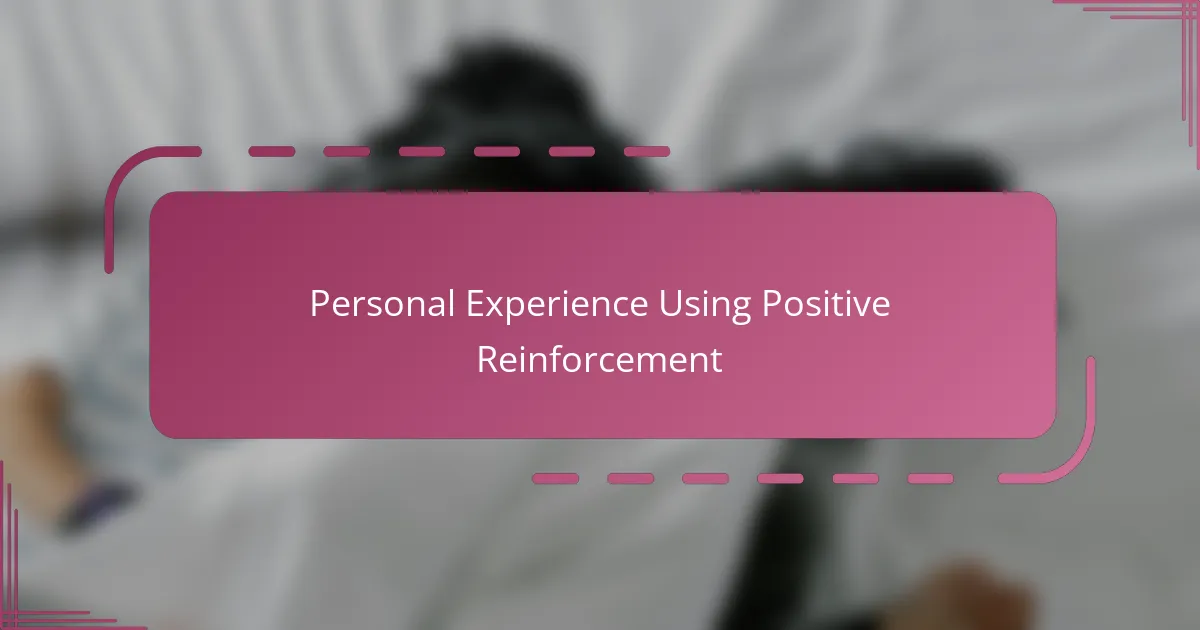
Personal Experience Using Positive Reinforcement
When my child first learned to tie their shoes, I made sure to celebrate every little stumble and success along the way. I remember the gleam in their eyes after I said, “You’re really getting the hang of this!”—that moment felt like pure magic. Have you ever seen how a simple nod of approval can make a tough task suddenly seem doable for your child?
There was a time when homework felt like a struggle, and instead of focusing on the mistakes, I started highlighting what my child did well, like the parts they completed neatly or on time. That small shift transformed frustration into motivation, and I noticed they began approaching homework with a more positive attitude. Have you tried turning the spotlight to effort over perfection in your own experience?
Sometimes, when my energy was low, I’d worry that my praise might sound hollow, but I found that even a heartfelt “I appreciate how hard you tried today” could lift both our moods. It made me realize that sincerity counts more than extravagance in positive reinforcement. What simple words have you found carry the most meaning during your parenting journey?
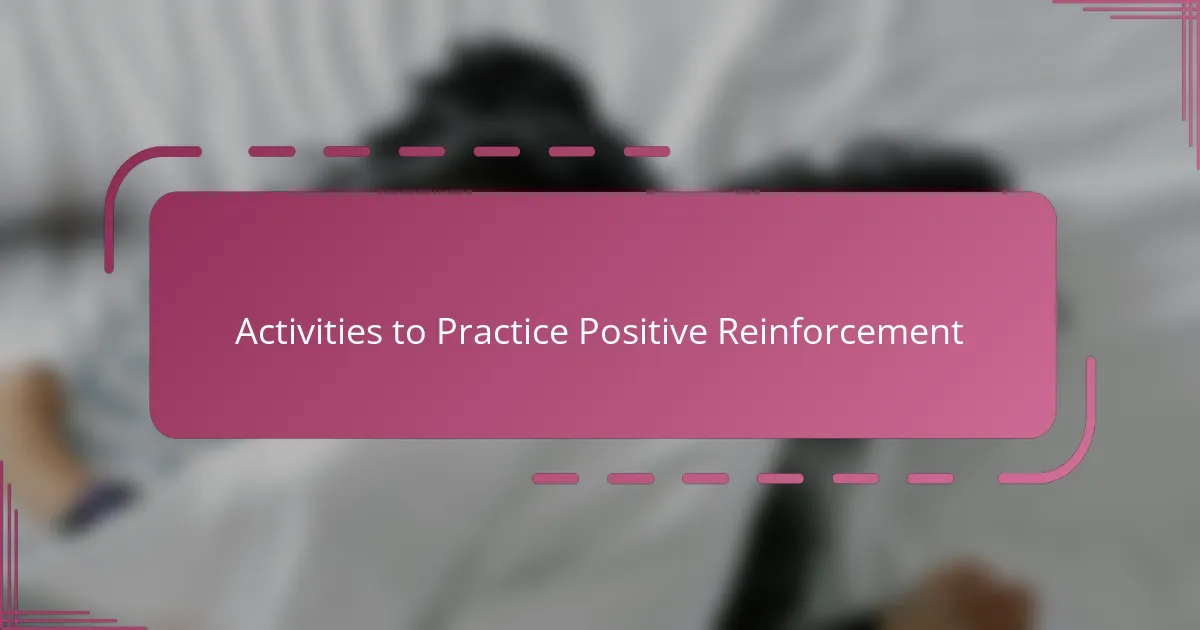
Activities to Practice Positive Reinforcement
One activity I use often is creating a “praise jar” where my child and I write down positive behaviors or moments on small notes and add them to the jar. When we read them together, it becomes a joyful reminder of all the good things happening, reinforcing those behaviors naturally. Have you ever tried something like this to celebrate the little wins with your child?
Another favorite activity is setting up simple reward charts for tasks like brushing teeth or tidying up toys. I make sure to keep the goals clear and achievable, so my child feels motivated rather than overwhelmed. It’s incredible how seeing those stars or stickers stack up encourages consistent effort without any nagging. What kinds of visual trackers have worked well in your home?
Sometimes, I turn ordinary moments into mini-celebrations—for instance, giving a high-five or a spontaneous dance when my child shares nicely or shows kindness. These small, fun gestures keep the mood light and positive, making praise feel like a natural part of our daily rhythm. Do you find that mixing fun into reinforcement keeps your child engaged and eager to repeat good behaviors?
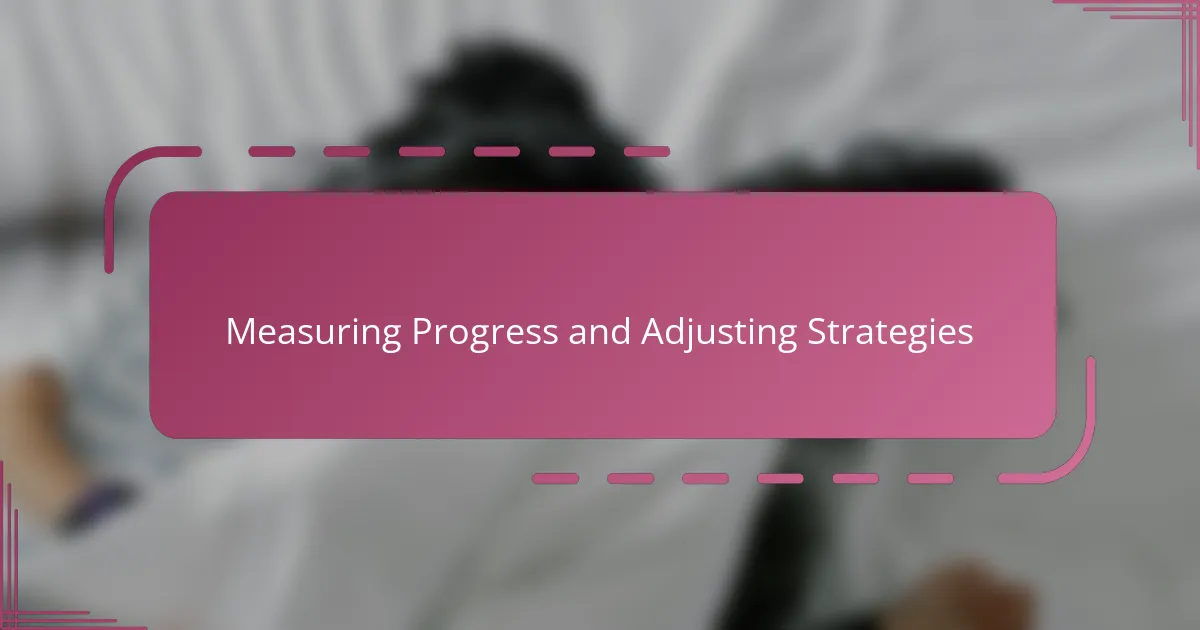
Measuring Progress and Adjusting Strategies
Tracking my child’s progress became a vital part of using positive reinforcement effectively. I started noting changes not just in big achievements but in subtle shifts, like increased patience or willingness to try again after a mistake. Have you noticed how celebrating small steps can reveal just how much growth is happening beneath the surface?
Sometimes the strategies I initially used didn’t quite hit the mark, so I learned to stay flexible and adjust based on what my child responded to best. For example, when verbal praise felt routine, switching to extra playtime or a special activity made all the difference. How often do you find yourself tweaking your approach to keep your child motivated and engaged?
I also keep an eye on whether the reinforcement is fostering genuine confidence or just dependency on rewards. If I sensed the latter, I’d pull back and shift focus toward internal motivation, like asking my child how they felt about their effort. Do you find it helpful to balance external praise with encouraging your child’s own sense of pride?


